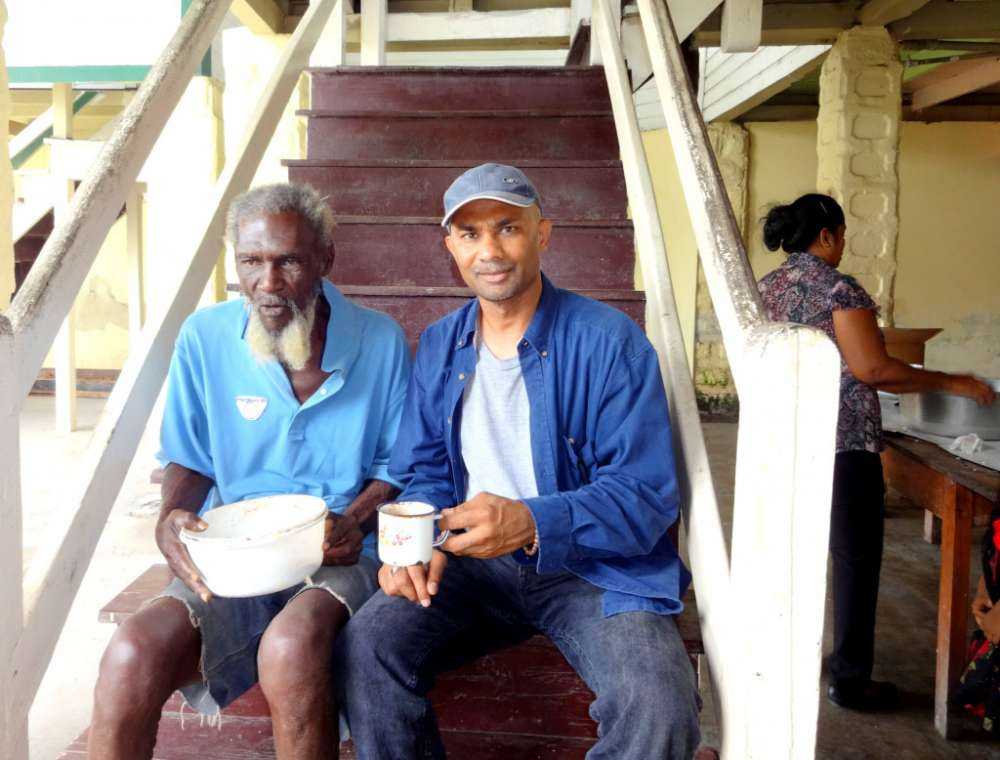My dear friend, Paul Dhandhari recently lost his nephew in a car accident. When the story of his passing was in the newspaper, an old co-worker recognized the surname and called Paul to find out if they were related. In catching up, he mentioned to Paul that he was planning to visit Guyana to feed at the Dharam Shala, an act which Paul frequently heard about while growing up.
The Dharam Shala is the the longest existing humanitarian charity in Guyana, with one facility in Georgetown and one in Berbice. It serves as a ‘House of Benevolence’ for all races. Simply put, it is a resting home for those who need it. Some residents were rejected by society, some by their families or others by the Guyanese justice system. The Dharam Shala accommodates both men and women of all ages and abilities, including those who are bedridden.
When Paul’s friend mentioned he was visiting Guyana to offer a meal to the residents, Paul chalked it up as a good deed and thought nothing else of it. Sitting on the board of the Three Rivers Children’s Foundation, he has his hands full with volunteer work of his own, so he commended his friend and forgot about it.
Weeks later, he received a call from said friend explaining the dire conditions of the Berbice Dharam Shala—the lack of infrastructure and the decrepit conditions. This knowledge became burdensome, and a few months later, he planned a one week visit to Guyana with the sole purpose of seeing how he could contribute to this cause.
Seeing the need first hand, Paul sat down with administrators, caretakers and religious leaders to express his interest in helping. What he continuously heard was a resounding echo that he was probably just like most people who come to feed the residents. How they come to do a good deed, take pictures and leave never to be heard from again. This sparked a fire under Paul and ignited a new burning desire to do more. Having not traveled with much funds, he made a few calls to Canada and quickly had some funds wired to him so that he could purchase and deliver twenty five mattresses to the Dharam Shala in Berbice. He further bought stainless steel plates and enamel cups for the residents, some who had only a plastic ice cream container to use as a plate.
At 10pm one night, in the pouring rain, Paul delivered the mattresses and tableware to the delight of the administrators and residents. He explained that he felt somewhat insulted to be put in the category of “most people,” and while that was not the intention of the manager, she told him she was glad she said it because it prompted this great act of service.
Paul explained to me in a sincere, heartfelt manner, “If you ask me what I lost or what I spent on this one week trip, I couldn’t tell you. Honestly. But what I do know is that I gained so much by being there with those people. It was a blessing.”
The new mattresses are a small improvement in a place that needs dire attention. The property in Berbice backs onto a river and there is need for a fence to protect the residents some who are not mentally well. There is need for paint and small renovations to stop flooding on the main floor. The need for food pales compared to the infrastructure concerns. The residents are fed three times a day, without exception, so Paul wants to share this awareness that food is not what they are lacking, but attentive care and support.
He further plans to spearhead a fundraiser in 2016 to raise awareness and support for Guyana’s House of Benevolence.
Paul is not one to brag or boast about his volunteering, so I asked him why he wants to put a story in Toronto Caribbean this time. He explained to me that it is about raising awareness for this neglected charity in Guyana which has done so much since its inception in 1921.
“I don’t feel right coming back to Canada with this experience and not sharing it. If we can make people aware of what the situation is and if a hundred people read this story and even one acts on it like I did when I heard about it, it adds to the benefit of the Dharam Shala and my one visit.”


O’Neal Walker
June 6, 2020 at 11:28 am
Could you send me/us a reliable point of contact for the Dharam Shala in Georgetown, Guyana? Thanks very much!
P.S. As a child under 7 y/ o I had many free meals there – and multi-coloured kool-did drinks. I must help.
evelyn
September 27, 2023 at 4:42 pm
Can you please sent me an e-mail address or phone number for the Dharam Shala in Georgetown. I am thinking of putting a lift in the building in New Amsterdam. Thanks